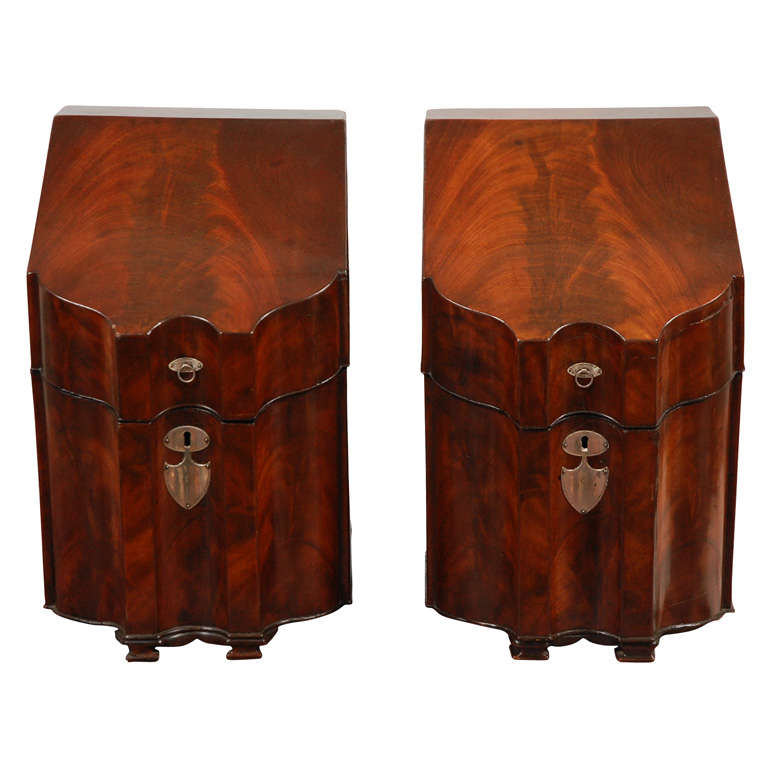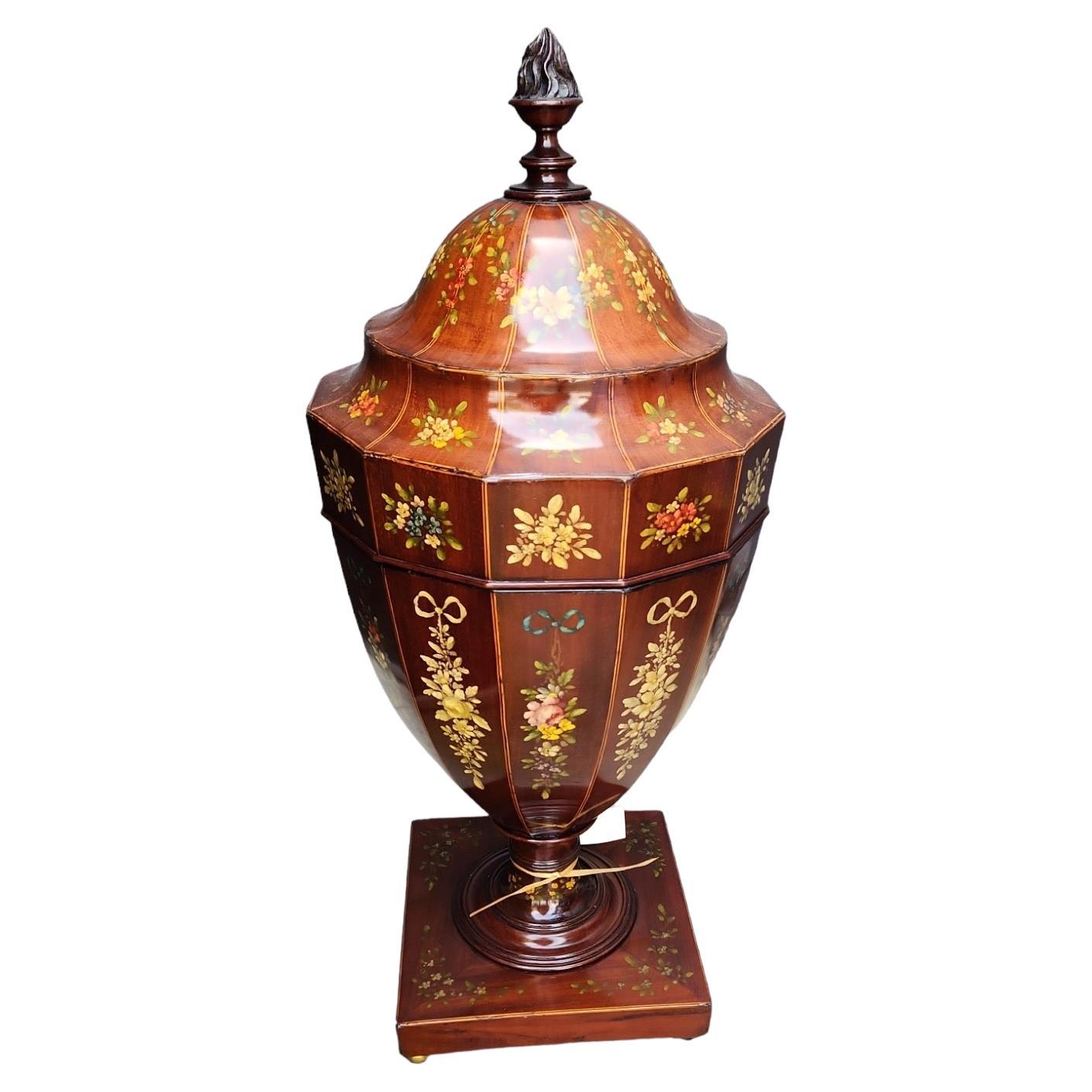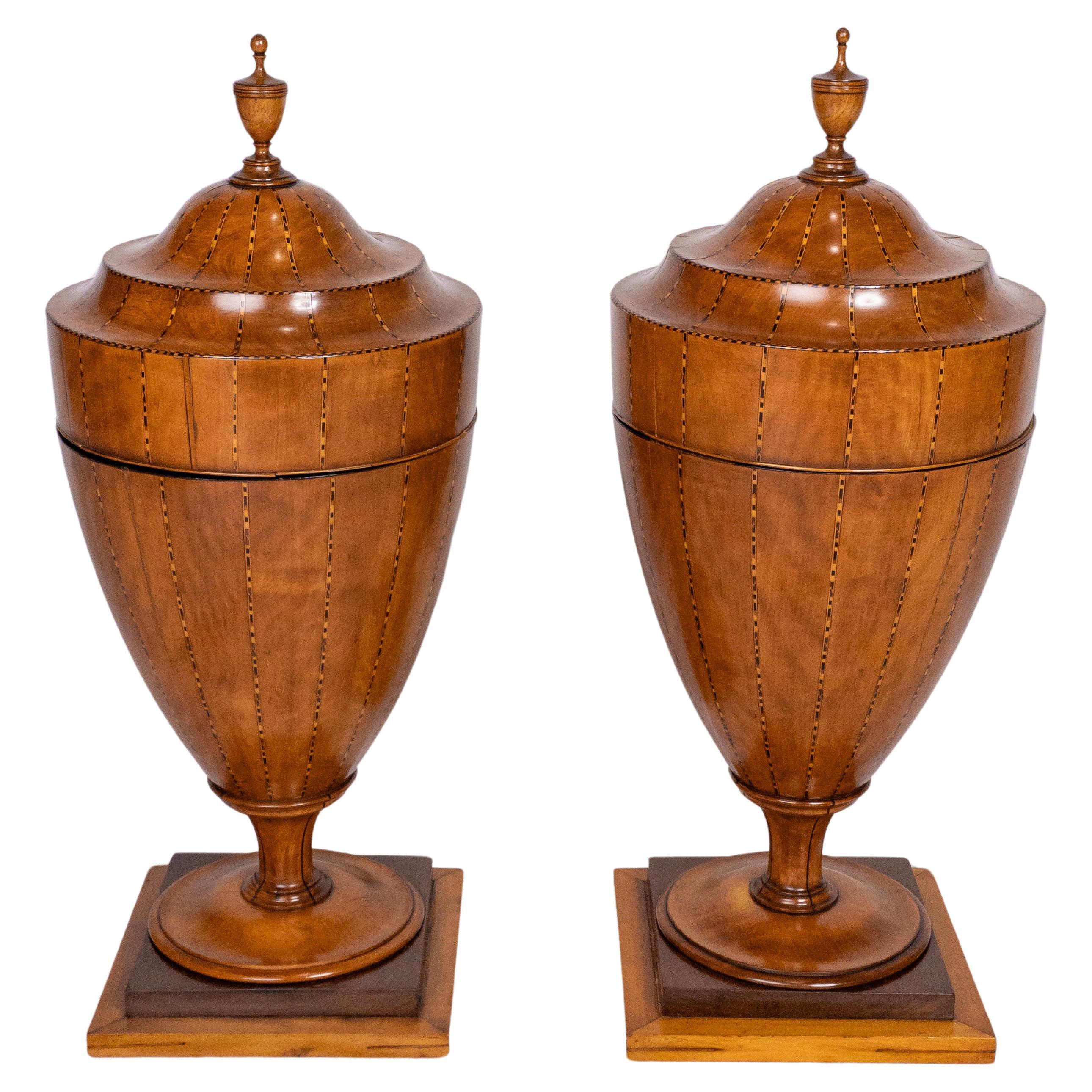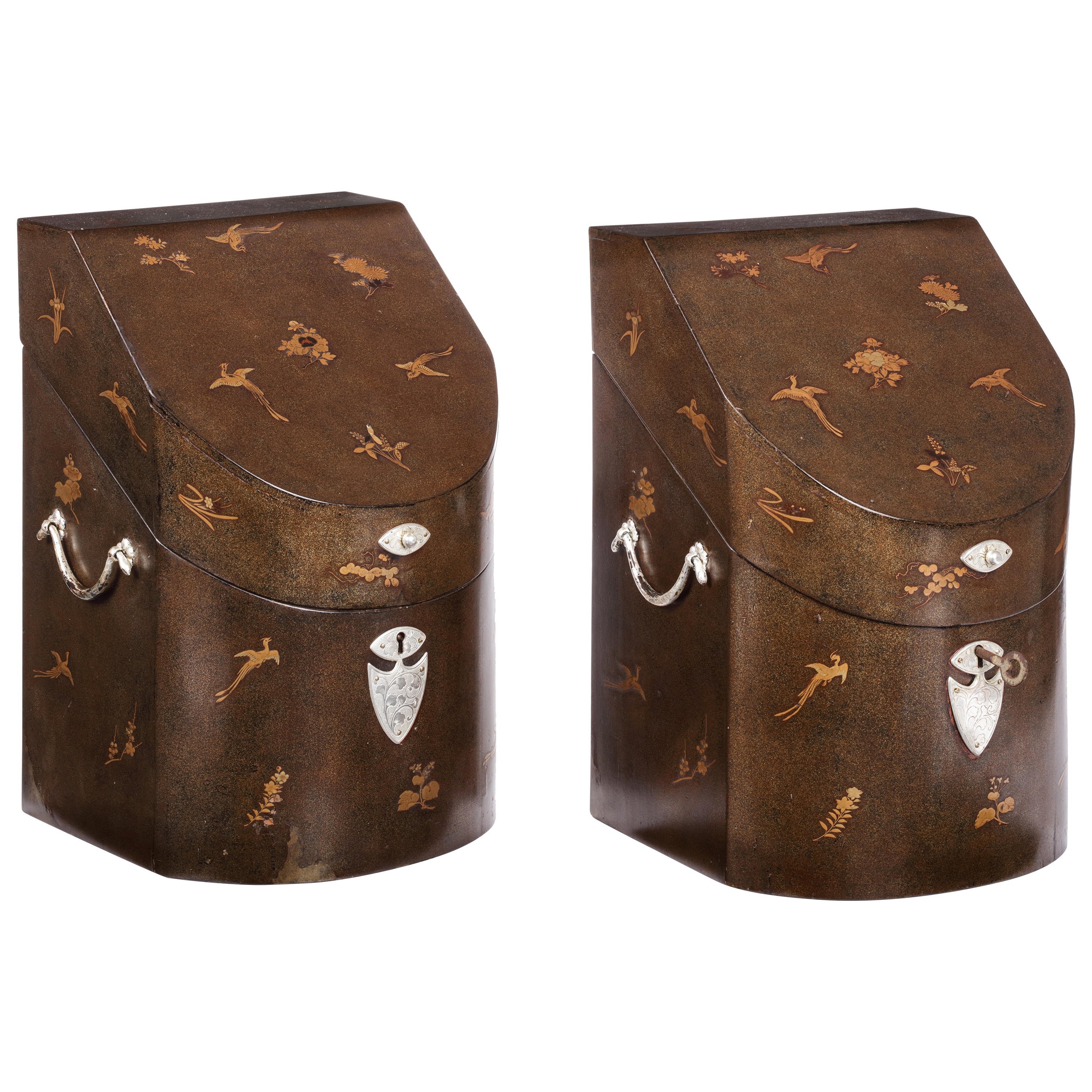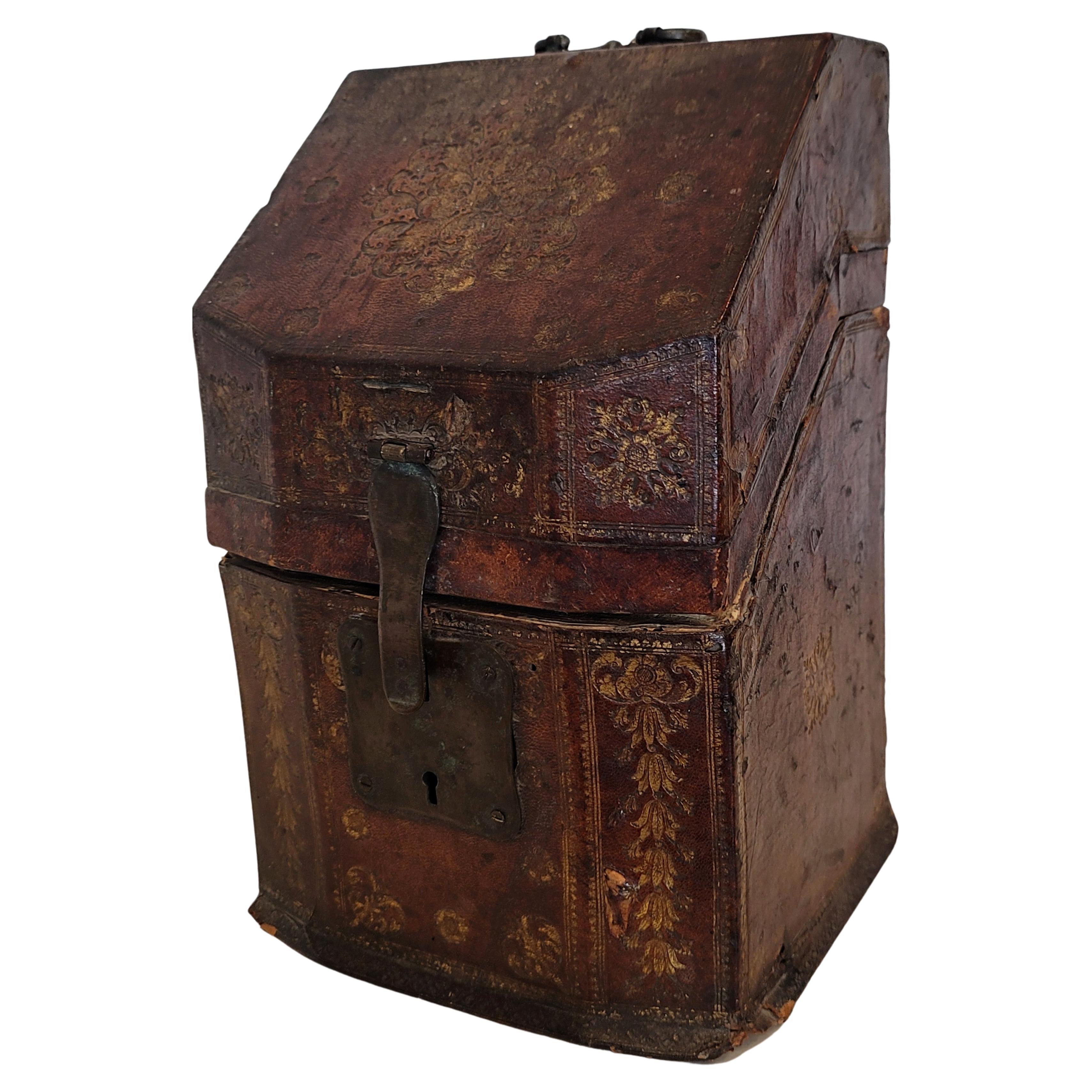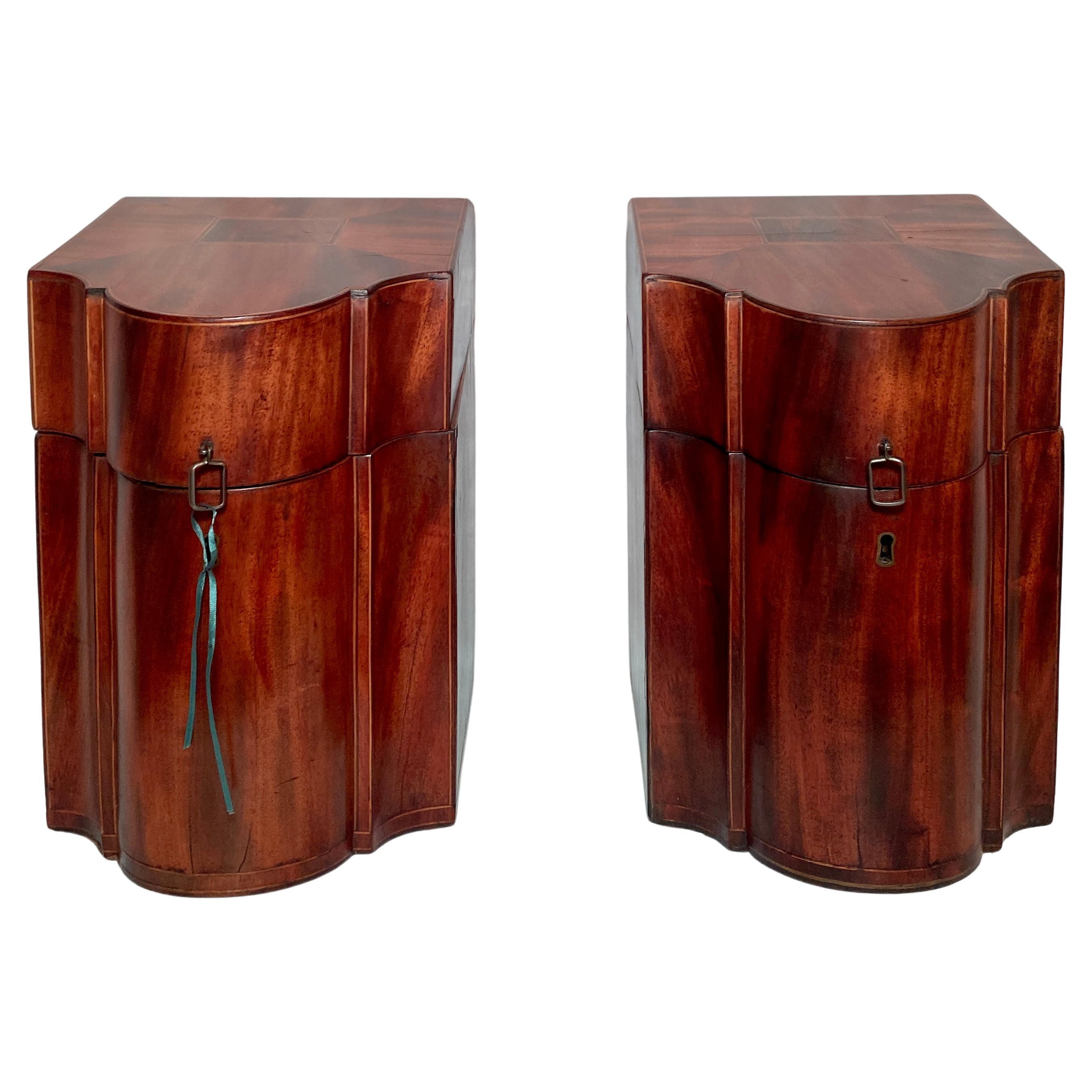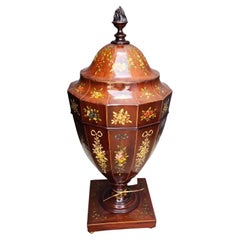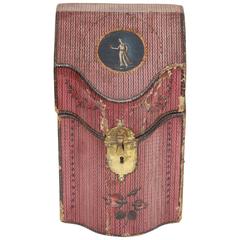
Late 18th Century English Painted Neoclassical Knife Box
View Similar Items
1 of 10
Late 18th Century English Painted Neoclassical Knife Box
About the Item
- Dimensions:Height: 13 in (33.02 cm)Width: 7.75 in (19.69 cm)Depth: 6 in (15.24 cm)
- Style:Neoclassical (Of the Period)
- Materials and Techniques:Gesso,Wood
- Place of Origin:
- Period:
- Date of Manufacture:18th Century
- Condition:Wear consistent with age and use.
- Seller Location:New York, NY
- Reference Number:1stDibs: f91291705057373043fs
You May Also Like
- Pair of 18th Century English Mahogany Knife BoxesLocated in Los Angeles, CAPair of 18th century English Mahogany Knife Boxes with Sterling Silver hardware and original fitted interiors.Category
Antique 18th Century and Earlier English Knife Boxes
MaterialsMahogany
- 19th Century English Hand-Painted Knife BoxLocated in Los Angeles, CAFinely painted. Excellent condition. Pedestal base is 8.5" x 8.5".Category
Antique Late 19th Century English Adam Style Knife Boxes
MaterialsWood, Paint
- Pair of Late 18th Century Cutlery BoxesLocated in Houston, TXA pair of Late 18th Century Urn Shaped Cutlery Boxes represents an exquisite blend of craftsmanship and decorative artistry from the period. These boxes, designed for storing and dis...Category
Antique Late 18th Century English Neoclassical Knife Boxes
MaterialsWood
$4,000 / set - 18th Century George III Mahogany Footed Knife BoxesLocated in New Orleans, LAAn exceedingly rare and important pair of George III-period mahogany knife boxes of exceptional quality and condition. The boxes are of serpentine form with refined crossbanded and c...Category
Antique 18th Century English George III Knife Boxes
MaterialsSerpentine
$18,500 / set - Pair of 18th-Early 19th Century Georgian Inlaid Mahogany Knife BoxesLocated in Charleston, SCPair of late 18th-early 19th century Georgian inlaid mahogany knife boxes. Great color and patina. Serpentine form.Category
Antique Early 19th Century English Georgian Knife Boxes
MaterialsMahogany
- Pair of Fine Japanese Export Lacquer Cutlery Knife Boxes, 18th CenturyLocated in Amsterdam, NLA pair of fine Japanese export lacquered cutlery boxes Kyoto or Nagasaki, late 18th century H. 33.5 x W. 24 x D. 21 cm The bow-fronted boxes with sloping lids flat at the top are made of hinoki wood (Cypress), coated with Japanese paper and decorated in lacquer with scattered gold birds and flowers on a nashiji background. The Japanese mounts are made of copper and both boxes still have internal partitions to keep the cutlery upright. The form of these boxes is similar to a pictorial-style knife box in the collection of the Groninger Museum (inv. 1989- 347), dated between 1730 and 1780, but the style of the decoration is more like that on a knife box in the Peabody Essex Museum in Salem (inv. E62271), which was brought to Salem by James Devereux, Captain of the Franklin, in 1799. Provenance: Henriette Jeane Christine van Neukirchen, called Nyvenheim (1807- 1849) and Nicolaas Johan Steengracht van Oostcapelle (1806-1866), thence by descent to the last owners, Ludolphine Emilie baronesse Schimmelpenninck van der Oye (1944) married in 1969 to Roland Daniel van Haersma Buma (1944), the last residents of castle Duivenvoorden near Voorschoten and the great-great-granddaughter of Nicolaas Johan Steengracht van Oostcapelle. There is no evidence that Nicolaas Johan himself, or any of his or his wife’s ancestors had ever been in Japan. However, Nicolaas’ grandfather (Nicolaas Steengracht, 1754-1840) was a director of both the VOC and WIC (West Indies Company...Category
Antique Late 18th Century Japanese Lacquer
MaterialsSilver
